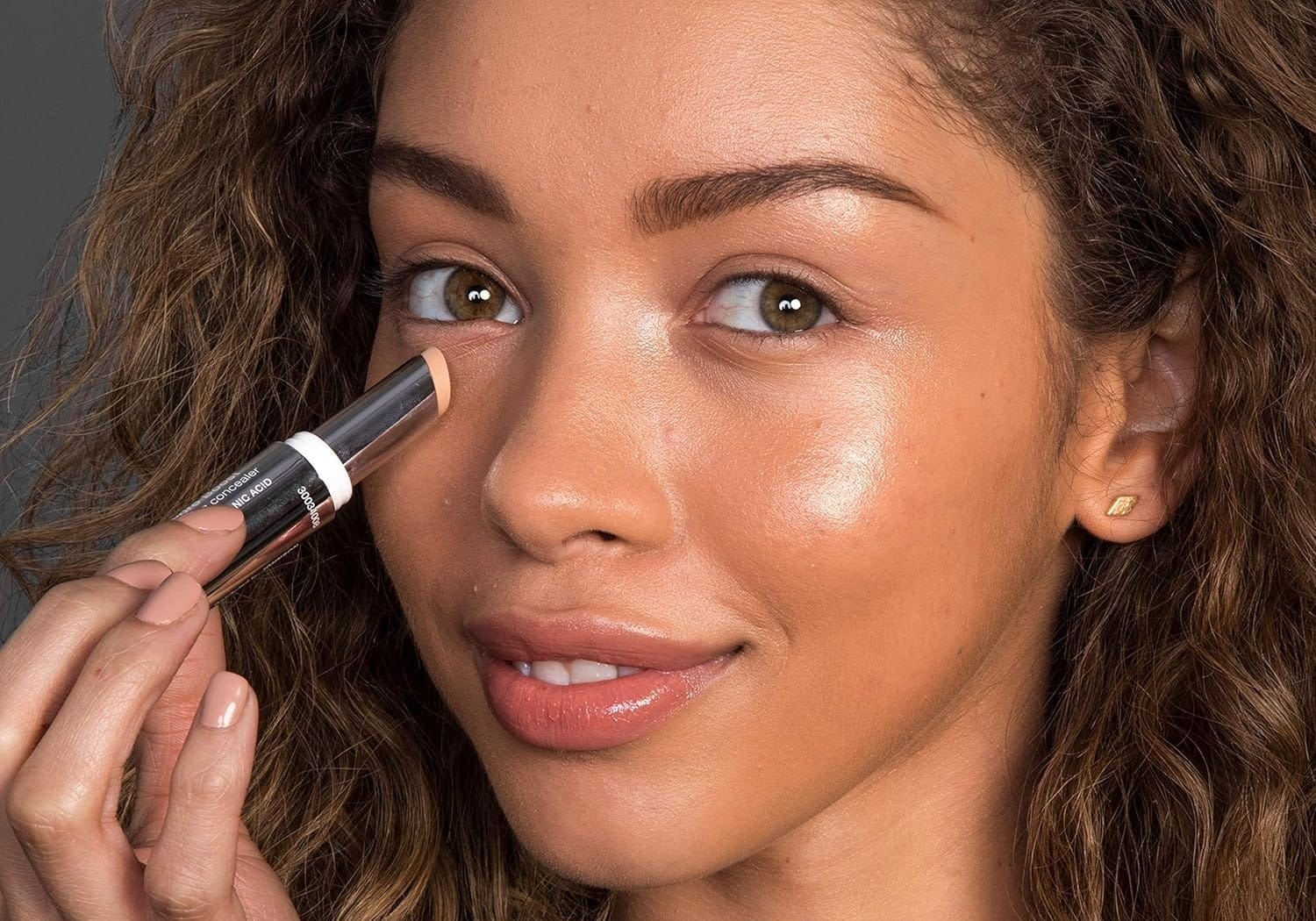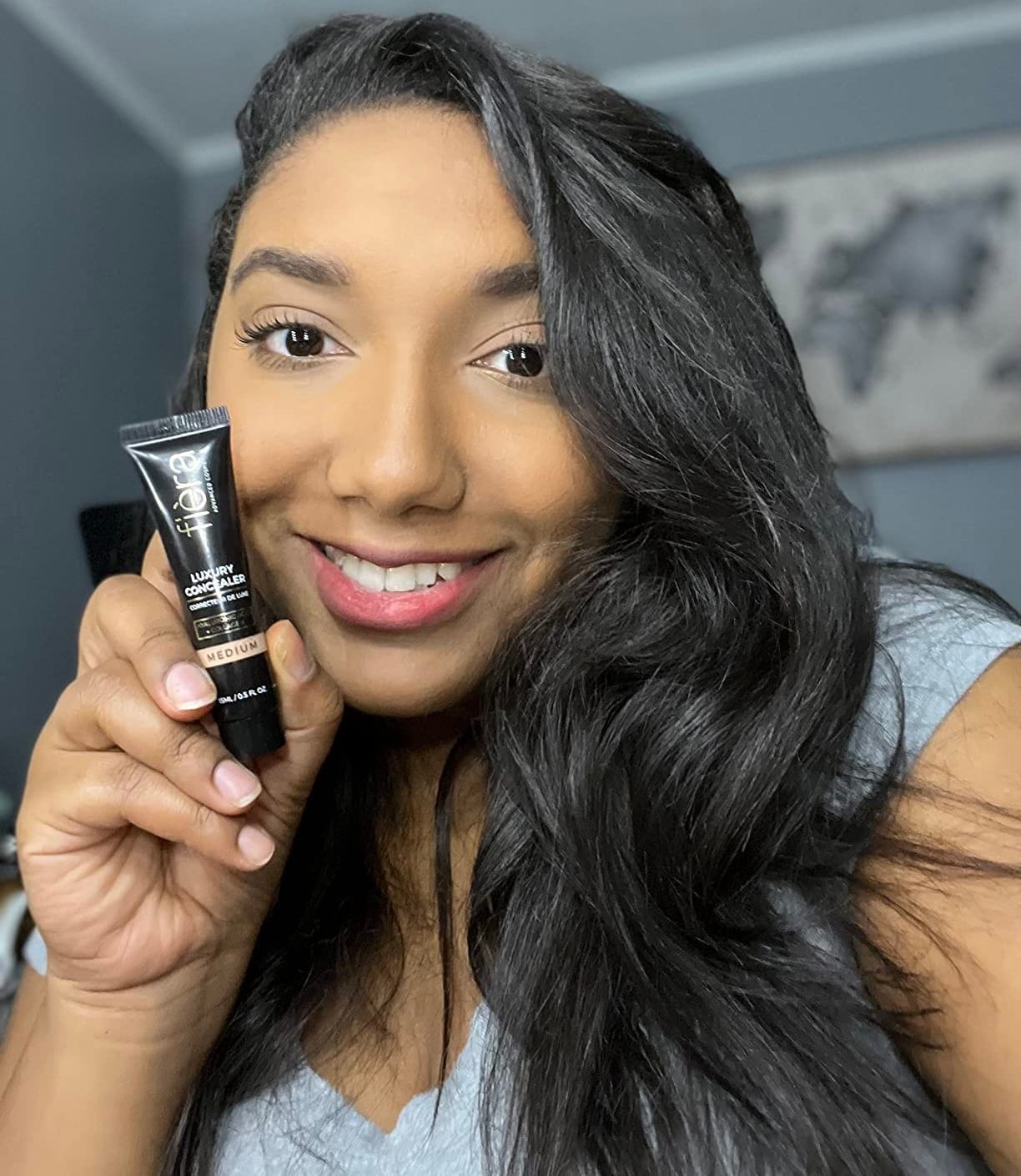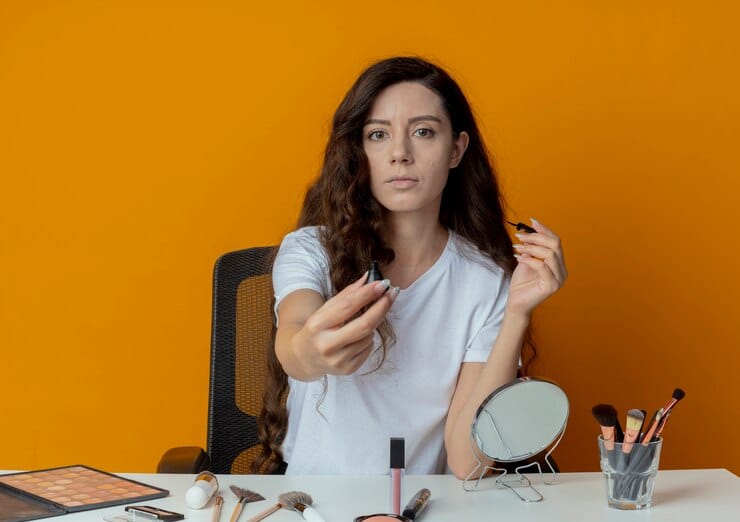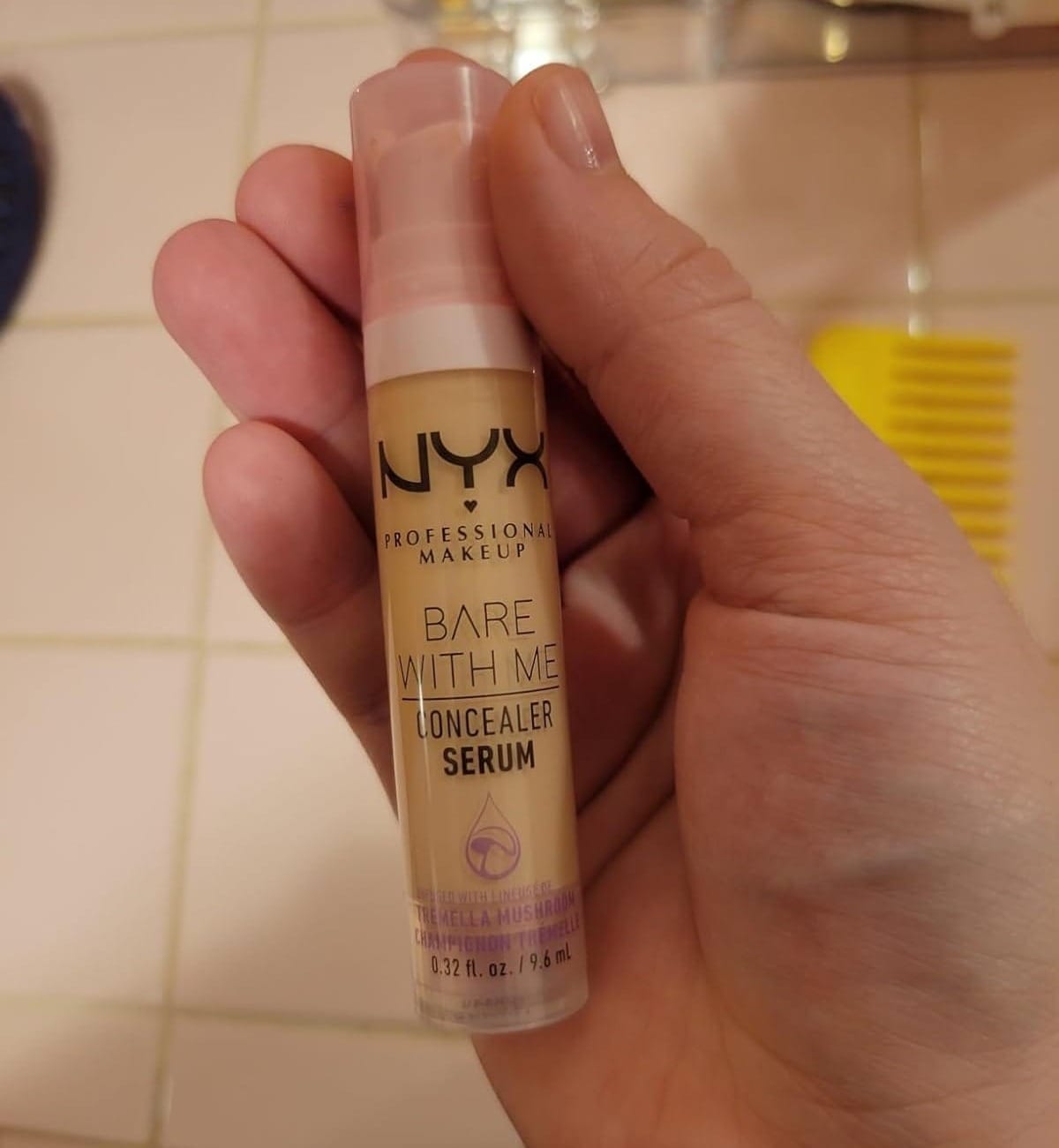Key Takeaways:
- Choosing the Right Concealer: Selecting the correct shade and type of concealer is crucial for masking under-eye imperfections effectively.
- Application Techniques: Mastering the art of concealer application can make a significant difference in your makeup routine.
- Maintenance Tips: Ensuring your concealer stays in place throughout the day involves using the right products and application methods.
Understanding the Basics of Under-Eye Concealers
The under-eye area is one of the most delicate parts of the face, requiring special attention during your makeup routine. Choosing the right type of concealer, such as a creamy concealer for dry skin or a matte finish for oily skin, is essential. Pro makeup artists often emphasize the importance of matching the concealer shade to the natural skin tone or going one to two shades lighter to brighten the under-eye area effectively.
Selecting the Perfect Shade and Type
When selecting a concealer, it's important to consider your skin type and the specific concerns you're addressing. For dark circles, a peach-toned concealer can be miraculous, while a yellow-toned product might better target sun damage and dark spots. Those with sensitive skin should opt for products labeled as suitable for delicate skin to avoid irritation.
Preparing the Skin



Before applying concealer, it's crucial to prepare the skin to ensure a smooth application. A hydrating eye cream can help moisturize the area, which is especially important for mature skin prone to fine lines. Allow the cream to absorb fully before moving on to the next step. This preparation helps in creating a flawless base for the concealer to adhere to.
Application Tools: Brush vs. Sponge vs. Fingers
The tools you use for applying concealer can vary based on personal preference and the specific product formula. A concealer brush allows for precise application, especially in the inner and outer corners of the eyes. Alternatively, a damp beauty blender provides a more blended look, and using the ring finger for application can offer gentle pressure ideal for sensitive under-eye skin.
Step-by-Step Guide to Applying Concealer
Start by applying a thin layer of makeup primer under the eyes to help the concealer glide smoothly and stay in place. Using the chosen tool, apply the concealer in a triangular shape beneath the eye, with the base along the lower lashes and the point toward the cheek. This shape helps create a natural-looking lightness that can make the face appear more youthful.
Blending for a Seamless Finish
Blending is key to achieving a flawless finish. Whether using a brush, beauty sponge, or fingers, blend the concealer gently without tugging at the skin. Ensure the product is evenly distributed, paying extra attention to the edges to avoid harsh lines. A damp sponge is excellent for achieving a dewy finish, while a brush might be preferable for a more defined look.
The Role of Skincare in Concealer Application
Proper skincare is the unsung hero of flawless concealer application. Before even reaching for your makeup arsenal, ensure your under-eye area is well-hydrated. A good moisturizer can make all the difference, providing a smooth canvas that prevents the concealer from clicking. For those with particularly dry skin, consider an eye cream that targets dryness and fine lines. This step not only improves the appearance of your makeup but also cares for the delicate skin beneath.
Moreover, integrating a targeted skincare routine can significantly enhance the effectiveness of your concealer. Use products that address specific concerns such as dark circles or puffiness. For instance, a caffeine-infused serum can reduce puffiness, while a vitamin C serum can brighten dark areas. By treating these issues beforehand, you minimize the amount of concealer needed, leading to a more natural-looking finish. Remember, the best makeup routine is one that starts with great skincare.
Integrating Concealer with Full Face Makeup
When planning a full face of makeup, the sequence in which you apply concealer and foundation can make or break your look. A general rule suggested by celebrity makeup artists is to apply foundation first, creating a uniform canvas. This step minimizes the amount of concealer needed, as the foundation already covers some imperfections. After foundation, use a concealer on targeted areas such as under the eyes and the T-zone to brighten and highlight. This method ensures a more natural-looking finish, preventing the makeup from appearing cakey or overdone.
Moreover, blending is crucial when integrating concealer with other face makeup. To achieve a seamless transition, lightly dab the concealer over the foundation using a sponge or brush, focusing on the darker areas that need more coverage. Celebrity makeup artists often recommend using a peach-toned concealer under the eyes to counteract blue or gray shadows, enhancing the eye makeup. Ensure the edges are well-blended to avoid any harsh lines, using the warmth of your fingers to gently press the product into the skin, which helps in setting the makeup for a longer-lasting effect.
Advanced Techniques for Concealer Application
To elevate your concealer application technique, consider the strategic use of color correcting. Before applying the usual concealer, use color-correcting shades to neutralize specific discolorations. For instance, a green concealer can be used to reduce redness, while a lavender shade can brighten dull, yellowish complexions. Apply these correctors sparingly and blend thoroughly before layering your regular concealer. This step ensures that the concealer starts with a neutral base, making the imperfections less noticeable and the overall appearance more flawless.
Another advanced technique involves the precise application of concealer in the inner and outer corners of the eyes. This method helps significantly brighten the eye area, making you look more awake and refreshed. After applying your base concealer under the eyes, add a tiny amount of lighter concealer to these corners. This not only highlights these areas but also helps in seamlessly integrating the eye makeup, giving an overall lifted effect to the face. Remember, less is more, so use these products sparingly to avoid a heavy, unnatural look.
Choosing Between Cream and Liquid Concealers
When deciding between cream and liquid concealers, understanding their unique benefits and the best application techniques for each is crucial. Cream concealers, like those from Laura Mercier, offer dense coverage and are ideal for covering dark circles and blemishes. They are typically applied after foundation and work well for targeted areas that require more concealer. Their thick consistency allows for pinpoint precision but requires blending to avoid a heavy look.
On the other hand, liquid concealers are lighter and perfect for achieving a natural finish. They are often preferred for their ease of application and ability to double as a highlighter when used in a shade lighter than the foundation. Liquid form concealers are best applied with tools like the Real Techniques sponge, starting from the inner corner and blending outwards. They are particularly effective for larger areas and general use across the T-zone. Choosing the right formula depends on your specific needs and the overall look you aim to achieve.
Setting Your Concealer
To prevent the concealer from creasing or sliding off throughout the day, setting it with a loose translucent powder is a must. Use a light hand to apply the powder, focusing on areas where the product has been applied. This step is crucial for maintaining the concealer's coverage and finish all day long.
Tips for Mature Skin
For those with mature skin, hydration is key. Opt for a hydrating concealer formula that includes ingredients like hyaluronic acid. Be mindful of the product settling into fine lines, and consider using a lighter hand with the setting powder to avoid a cakey appearance.
Concealer for Dark Circles
Dark circles require specific attention as they are one of the most common concerns. A color corrector can be used before the concealer to neutralize the darkness. Follow up with a concealer that is one to two shades lighter than your skin tone to brighten the area effectively.
Longevity: Making Concealer Last
To ensure your concealer lasts throughout the day without needing touch-ups, consider using an eyeshadow primer underneath for extra hold. Additionally, avoid over-moisturizing the area before application, as too much product can cause the concealer to slide.
Addressing Different Skin Types
Each skin type has its unique needs when it comes to concealer. Oily skin might benefit from a matte concealer to prevent shine, while dry skin might require a more moisturizing product. Knowing your skin type and choosing products accordingly can make a significant difference in your makeup's appearance and longevity.
Expert Advice from Celebrity Makeup Artists
Celebrity makeup artists often share that less is more when applying under-eye concealer. Building coverage gradually and only adding more where necessary can prevent the makeup from looking heavy and ensure a more natural finish.
Common Mistakes to Avoid
One of the biggest mistakes in concealer applications is using too much product. This can lead to a heavy, cakey look that draws more attention to the area. Another common error is not setting the concealer, leading to it wearing off prematurely.

Q1: Can I use a regular face concealer for the under-eye area?
A1: While you can use a regular face concealer, products specifically designed for the under-eye area often provide better coverage for dark circles and are formulated to be gentler on delicate skin.
Q2: How do I choose the right shade of under-eye concealer?
A2: Generally, you should choose a shade that is one to two shades lighter than your natural skin tone if you're looking to brighten the under-eye area. For covering dark circles or discoloration, start with a color corrector, then apply a concealer that matches your skin tone.
Q3: How can I prevent my under-eye concealer from creasing?
A3: To prevent creasing, ensure the under-eye area is well moisturized, apply a thin layer of primer, and set the concealer with a light dusting of translucent powder. This helps to keep the concealer in place and minimizes creasing throughout the day.

Applying under-eye concealer effectively involves selecting the right product, preparing the skin, using the correct tools, and employing proper techniques for application and blending. By following these guidelines, you can achieve a flawless, natural-looking finish that enhances your overall makeup look and lasts throughout the day.










